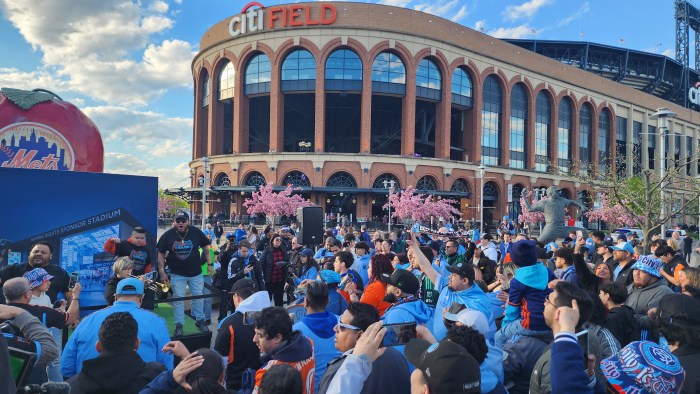By Philip Newman
Robert Moses’ uncompromising attitude toward opposition to everything from freeways to tunnels made him a villain to many neighborhood activists and he left an enduring mark on the landscape of Queens.
As New York City Parks commissioner, Moses was appointed to oversee the clearing of Flushing Meadow, the site for the 1939 World’s Fair.
As he had done in his more than four decades as New York City’s most prodigious builder, Moses relentlessly pushed forward his projects, brushed aside protests and repeatedly warned of failure if schedules were not met in the years leading toward the scheduled opening of the fair.
Moses was more than satisfied with the plan for the fair and said so publicly.
“The landscape of this fair has been compared with Versailles, but unlike the pleasure grounds of French Royalty, this will be adapted to the recreational demands and habits of large numbers of citizens,” he said.
In early 1936, Moses warned that any further delays “will be fatal” to the success of the fair.
A few months later, Moses complained of “weaknesses” on the World’s Fair committee. He named no names.
“It is now not impossible but improbable that the fair can open on schedule in 1939,” he said.
Still later in 1936, Moses resigned from the World’s Fair Committee board of directors. Grover Whalen, president of the committee, hastened to deny Moses’ resignation was in “any way” due to a disagreement between Moses and anyone on the committee. As for Moses, he demanded that his resignation be given no publicity since it was “a routine affair.”
State Sen. Joseph Nunan at one point offered a suggestion on legal aspects of Flushing Meadow and the World’s Fair Commission.
“It’s absurd,” said Moses, dismissing the suggestion. “It must be a joke.”
Queens civic leaders complained to city officials in 1937 that Moses was a conducting himself like a “dictator” in issuing zoning regulations in the area adjacent to the World’s Fair.
Moses had decided to limit electric signs, automobiles, amusement facilities trailer camps and parking areas in an attempt to present what he called a “high tone” to the area.
Moses was, of course, at his pluperfect pinnacle of efficiency when it came to the tremendous project to turn Flushing Meadow into a site for the 1939 World’s Fair.
Robert Caro explains in his book, “The Power Broker. Robert Moses and the Fall of New York”:
“The work of filling and grading was begun on schedule — and finished on schedule. And at any hour of the day or night Moses would appear to make sure that there was no delay. His only heartbreak was the fact that once every 24 hours, the machinery was stopped 20 minutes for oiling.”
“Extravagant and unnecessary” said Moses of a proposal to build a spur of the IND subway to the World’s Fair. He lost that one.
To suggest that Moses had many irons in the fire in those days was an understatement. At the time of the planning of the 1939 World’s Fair he was also Parks commissioner and he presided over other great projects as well, several during the era of the fair.
Among Moses’ projects in Queens are the Grand Central Parkway, the Van Wyck Expressway, the Whitestone Expressway, the Clearview Expressway, the Throgs Neck Expressway, the Brooklyn-Queens Expressway, Shea Stadium, the Laurelton Parkway, the Bronx-Whitestone Bridge, the Throgs Neck Bridge, Astoria Park, Kissena Park, Cunningham Park, Alley Pond Park and the Queens-Midtown Tunnel.
Moses also demonstrated his dedication to preservation of the public order.
On Aug. 17, 1937, Moses chased down and ordered the arrest of a truck driver who was weaving in and out of traffic at 60 mph on the Triborough Bridge. The speed limit was 30 mph.
Or, more accurately, Moses’ chauffeur chased down and caught the errant trucker. Moses, who never learned to drive, was riding in his limousine at the time.
In court, Moses used toy vehicles to demonstrate before a judge how he said the incident took place. He testified that his driver slammed on the brakes to avoid getting sideswiped by the truck
The truck driver, Eugene Bartoli, 39, of North Bergen, N.J. was found guilty and fined $25.
































